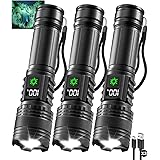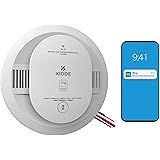Have you ever experienced the frustration of an LED bulb suddenly dimming, flickering, or simply dying? The immediate thought often turns to replacement. It seems like a minor inconvenience, yet each discarded bulb contributes to landfill waste. Many people feel compelled to buy new ones, perpetuating a cycle. However, a surprising truth exists: many LED bulbs can be repaired. This is possible with just a few simple tools. The video above demonstrates practical methods. It shows how to perform DIY LED lamp repair without needing a soldering iron. This guide expands on these concepts, offering deeper insights and additional context.
The notion of repairing common household items is empowering. It saves money and reduces environmental impact. Manufacturers sometimes design products with a limited lifespan. This encourages frequent purchases. However, armed with knowledge, consumers can push back against this trend. Extending the life of your LED bulbs is a prime example. This approach promotes sustainability. It also keeps more money in your pocket.
Understanding Your LED Bulb: Anatomy of Light
Before diving into LED bulb repair, it helps to understand its components. An LED bulb is more complex than traditional incandescent bulbs. Key parts include the diffuser, the LED array, a driver circuit, and a heatsink. The diffuser spreads the light evenly. The LED array consists of multiple light-emitting diodes. These LEDs are typically connected in series. The driver circuit stabilizes the current flow to the LEDs. The heatsink manages thermal energy. This intricate design makes efficient lighting possible. However, it also introduces specific points of failure.
When one LED fails in a series circuit, the entire chain breaks. This is why a single faulty LED can cause the whole bulb to stop working. The video illustrates this principle clearly. Identifying that one problematic component is the key. Often, other LEDs remain perfectly functional. Therefore, isolating and bypassing the faulty unit becomes the focus. This simple step can restore full functionality. It prevents unnecessary disposal of an otherwise good bulb.
Disassembly: Accessing the Core for LED Lamp Repair
The initial step in any LED light repair involves careful disassembly. Most LED bulbs feature a plastic or frosted glass diffuser. This cover is often glued or snapped into place. A thin, sturdy tool, like a knife, can be used. It helps to gently pry the diffuser away from the bulb body. Patience is essential during this process. Excessive force might cause damage. Some diffusers are more securely affixed than others. Therefore, a little extra effort may be needed. Always ensure the bulb is unplugged before attempting disassembly. Safety must be prioritized at all times.
If the diffuser resists removal, a cautious approach is necessary. Placing the blade of a knife into the seam and tapping it lightly can help. This action aims to loosen any adhesive. The goal is to separate the components without cracking the plastic or glass. Once the diffuser is removed, the LED array becomes visible. This board houses all the individual LEDs. Accessing this array is crucial. It allows for further diagnostic steps. Different bulb designs may present unique challenges. However, the core principle remains consistent.
Pinpointing the Problem: Identifying the Faulty LED
Locating the exact faulty LED is a critical diagnostic step. The video highlights several effective methods. Each method helps isolate the non-functioning component. This makes precise DIY LED repair possible. A common indicator is a small black dot. This mark often appears on the surface of a burnt-out LED. This darkening is due to localized overheating. It signifies an internal short or open circuit. A careful visual inspection is usually the first approach. However, not all faulty LEDs will show this visible sign.
When no black dot is apparent, other techniques are employed. One method involves gently pressing each LED with a non-conductive toothpick. The bulb must be on during this test. A faulty LED may flicker or light up momentarily when pressed. This temporarily completes the circuit. Extreme caution is required here. Live phase voltage can be present. Always use protective goggles. Avoid direct contact with the LEDs. An alternative, safer method is inspecting the bulb in complete darkness. A completely dark LED, while others glow faintly, indicates the culprit. This passive observation minimizes electrical risk.
Bypassing the Faulty LED: Restoring the Circuit
Once the non-working LED is identified, the next step is to bypass it. This restores the electrical circuit. Two primary methods are demonstrated in the video. Both are effective for fixing LED bulbs without soldering. The first method uses a thin wire jumper. A small piece of wire, often salvaged from an old charging cable, is used. This wire is carefully positioned across the contacts of the faulty LED. The ends of the wire must securely touch the exposed tin contacts. This re-establishes the connection. The current then flows around the burnt-out LED. The bulb’s driver ensures stable current distribution. All other LEDs will then illuminate properly. This method can be quite painstaking. The small size of the components requires precision and patience.
A significantly easier alternative involves conductive sealant. Few people realize that black window sealant conducts electricity. A small amount of this sealant is applied directly over the faulty LED. It needs to completely cover both contacts. This creates a conductive bridge. The sealant quickly dries and forms a stable bypass. This method is praised for its simplicity and speed. It effectively restores the circuit in seconds. This technique is a game-changer for accessible home LED repair. It negates the need for soldering skills. This makes LED bulb repair achievable for almost anyone.
Extending Lifespan: The Science of Thermal Management
Beyond simple repair, measures can be taken to significantly extend an LED bulb’s life. The primary reason LEDs fail prematurely is overheating. LED performance degrades rapidly at elevated temperatures. The recommended maximum operating temperature for LEDs is around 180°F (80°C). Exceeding this limit causes lumen degradation and premature failure. Manufacturers sometimes push current levels high. This optimizes initial brightness. However, it compromises long-term durability. Effective thermal management is therefore crucial for extended LED durability.
Solution 1: Diffuser Removal and its Impact
Removing the diffuser is a simple yet effective cooling strategy. The video demonstrates this with an experiment. A bulb with its diffuser reached 74°C after 5 minutes. The same bulb, without its diffuser, only reached 60°C. This represents a significant temperature drop. The diffuser traps heat, exacerbating the overheating problem. Removing it allows for better convection. The LEDs operate at a lower temperature. This extends their operational lifespan considerably. An added benefit is increased brightness. The diffuser slightly absorbs light. Without it, more lumens are projected. The aesthetic change is minimal for many applications. This is a practical step for enhancing LED cooling.
Solution 2: Enhanced Ventilation with Drilled Holes
For even greater cooling, drilling holes into the bulb’s casing is an option. The video shows this advanced modification. This creates additional pathways for air circulation. The internal temperature of the LEDs is further reduced. After drilling, the experimental bulb’s temperature dropped to 50-52°C. This is a noticeable improvement over diffuser removal alone. The process involves carefully drilling small holes. This should be done into the plastic body surrounding the heatsink. This method actively improves heat dissipation. It allows the LEDs to “breathe” more easily. This enhances the thermal regime. Consequently, it contributes to a much longer LED lifespan. This technique is a more involved step in proactive LED maintenance.
Solution 3: Current Reduction via Resistor Modification
Another advanced technique for extending LED life involves reducing the operating current. This directly lowers heat generation. Each LED bulb contains a driver circuit. This circuit regulates the current supplied to the LEDs. Near this driver, current-setting resistors are found. These are often marked “RS.” Carefully removing a layer of coating from one of these resistors can increase its resistance. This, in turn, reduces the current flow to the LEDs. The video suggests aiming for a power reduction of about 1.5 times. This modification requires precision. Measuring the power output is essential. This method is best suited for those with some electronics experience. It involves working with live electrical components. However, it offers substantial long-term benefits. A reduced current ensures cooler operation. This significantly extends the bulb’s overall operational time. This modification represents a highly effective, yet technical, approach to LED current reduction for longevity.
All these thermal management methods consistently drop operating temperatures. The method of drilling holes proved most effective in the video’s experiment. However, simply removing the diffuser offers a significant boost. Practice shows these repaired and optimized bulbs perform well. They can provide years of additional service. Do not rush to discard seemingly dead LED bulbs. Consider giving them a second life. This contributes to a more sustainable future. It also saves you money. Manufacturers may encourage frequent replacements. Yet, with a little know-how, you can defy this trend.










